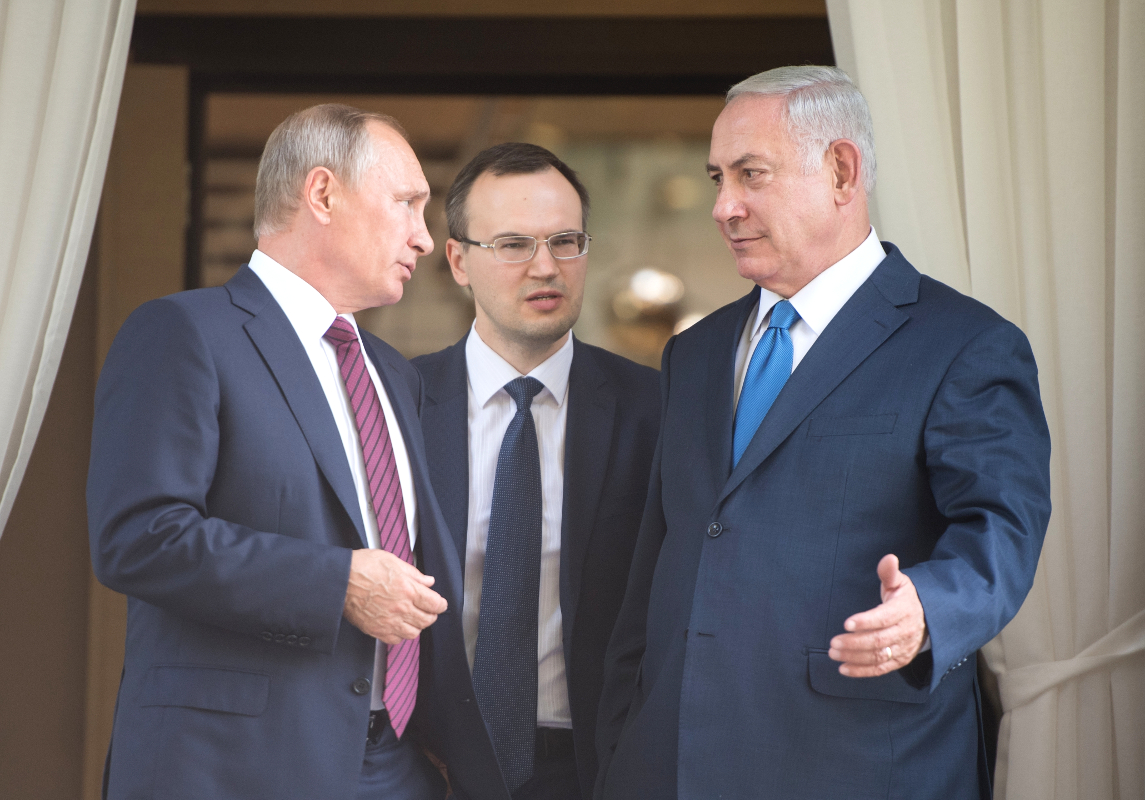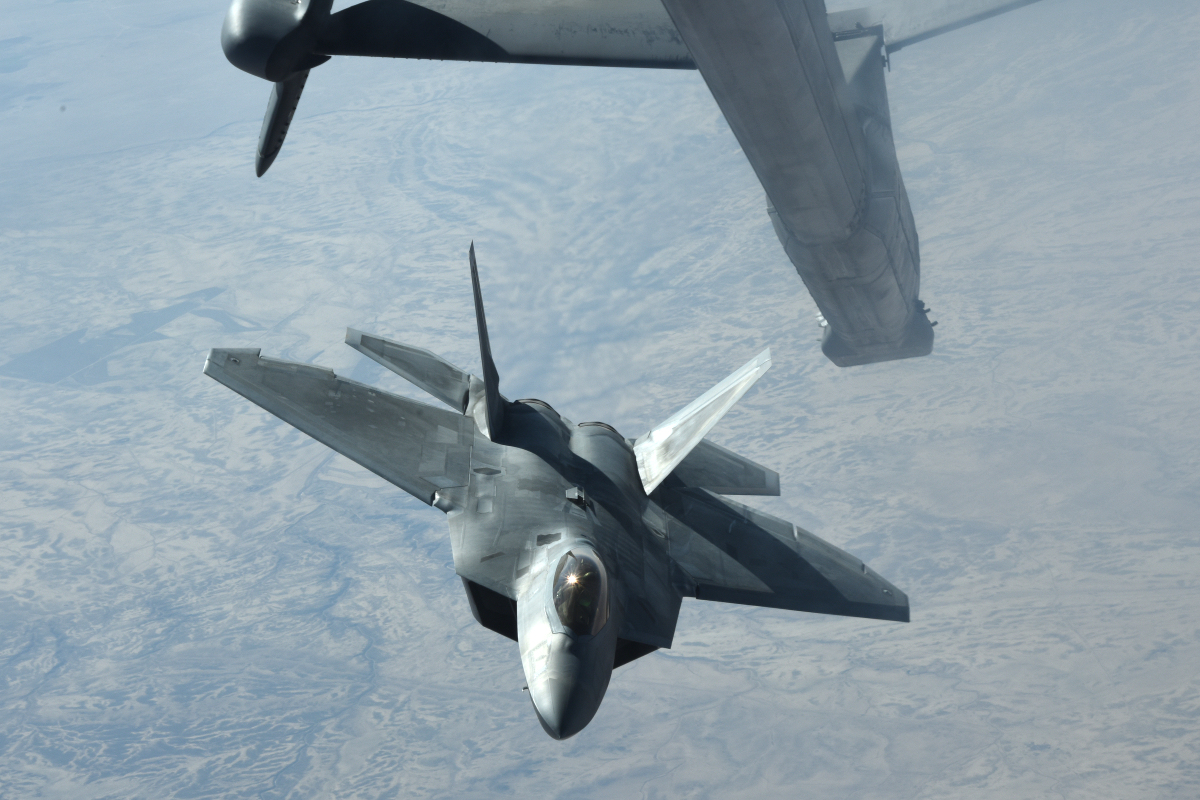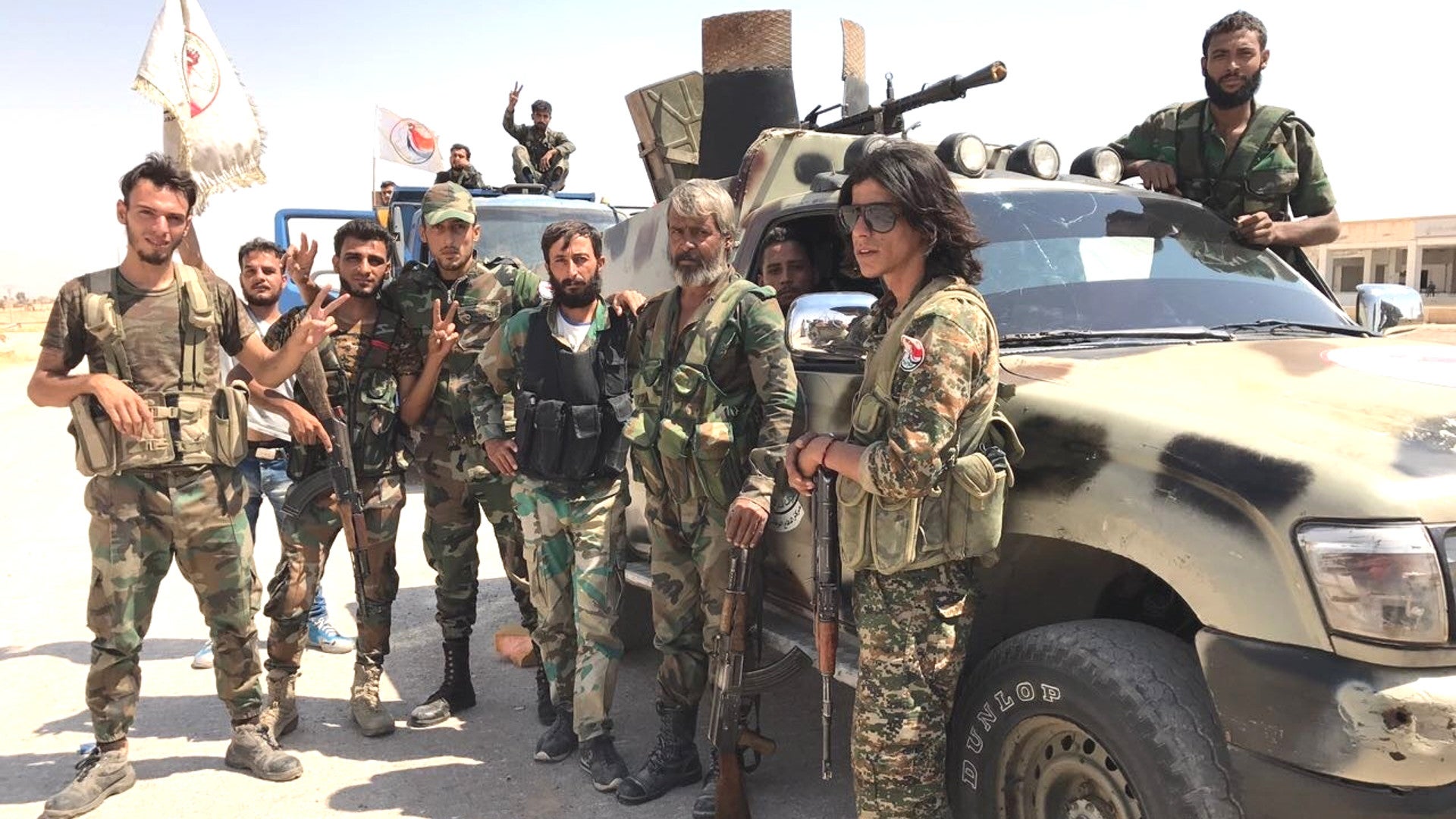American forces in Syria, along with their local partners, have now weathered two separate attacks from troops fighting on behalf of dictator Bashar Al Assad, one of which almost certainly involved some number of Russian military personnel or contractors from a company called Wagner. Though the United States soundly defeated its opponents in both cases, the incidents could be another sign of increasingly worrisome tensions with Russia in Syria as the situation in the country careens toward a larger regional conflagration.
On Feb. 13, 2018, U.S. personnel called in a air strike, involving an MQ-9 Reaper drone, to destroy a T-72 tank that had been firing at them and members of the American-backed Syrian Democratic Forces (SDF), the bulk of which are Kurdish fighters, on the eastern side of the Euphrates River near Syria’s strategic city of Deir ez-Zor.
Almost a week earlier, those same American troops had summoned a massive amount of air and artillery support to brush back approximately 500 pro-Assad fighters and members of Wagner armed with tanks and other heavy weapons who assaulted their positions. The SDF and their U.S. advisers are situated to the east of a formal de-confliction line that is supposed to separate United States and Russian military activities and, by extension, those of their allies, specifically to avoid these sorts of dangerous engagements that could escalate into a larger conflict. The first skirmish reportedly resulted in the deaths of dozens of Russian private military contractors, who often act as deniable stand-ins for the Kremlin’s own forces.
Russian involvement
“According to preliminary information, we could be talking about the deaths of five people – presumably Russian citizens – as a result of an armed confrontation whose causes are being examined,” Russian Foreign Ministry spokesperson Maria Zakharova said during a routine briefing on Feb. 15, 2018, in what is perhaps most heavy caveated official statement to date on whether Russia was involved in the incidents in Syria or not. “There were not 400, not 200, not 1,000, and not 10.”
The exact extent of Russia’s participation in the attacks remains a major question that could have significant ramifications for the overall situation in Syria. The United States, which has also sought to downplay the involvement of Russian personnel, official members of the military or otherwise, continually stresses that its own forces in the country and their local partners are only there to fight ISIS and not to take a stand in the broader civil war.
The video below shows a U.S. Air Force MQ-9 Reaper destroying a T-72 tank near Deir ez-Zor on Feb. 13, 2018.

“It makes no sense, it does not appear to be anything coordinated by the Russians,” U.S. Secretary of Defense James Mattis told reporters on Feb. 13, 2018. “I think the Russians would’ve told us [if they were involved],” he had said on Feb. 8, 2018.
But there is a growing amount of evidence to challenge Mattis’ insistence that the Kremlin can only have been a neutral actor in the incidents. The most important detail is that the Russians who were involved were likely in the employ of a private military company called Wagner.
Members of the firm, which officially runs its operations out of Hong Kong because such businesses are illegal in Russia, has no publicly available contact information, and reportedly recruits among former military personnel from Russia and former Soviet republics through word of mouth, has appeared alongside pro-Russian separatists in Eastern Ukraine and with pro-Assad forces in Syria, including as part of a militia known as the “ISIS Hunters.” There are reports that it has sent forces to Libya and Sudan, two other countries where Russia also has significant geopolitical interests. The group appears to be a direct outgrowth of the nebulous “little green men” that Putin employed in 2014 to seize Ukraine’s Crimea region.

The Wagner connection
The possibility that Wagner or other Russian military contractors had been involved in the assault on Feb. 7 emerged almost immediately after the incident. Then, on Feb. 8, 2018, Igor Girkin, also known as Igor Strelkov, a Russian veteran who has taken part in the fighting in Ukraine’s Crimea region and breakaway eastern provinces ostensibly as an independent operator, said the American counterattack had destroyed two Wagner “tactical units.”
He made the claims, without citing any sources, via the online social network Vkontakte, or VK, a Russian-language analogue to Facebook. Roman Saponkov, a Russian war correspondent who previously revealed damage at Russia’s Khmeimim air base in Syria’s Latakia governorate after a mass drone attack on New Year’s Eve 2017, subsequently made his own post on the website alleging Wagner had lost between 20 and 25 personnel in the battle.
Three anonymous sources, including an individual said to be a Russian military doctor, told Reuters that total death toll for members of the firm were between 80 and 100. Russian opposition politicians have also seized on the issue and are demanding a formal accounting from the Kremlin ahead of the country’s upcoming presidential election in March 2018.
Unlike other controversial private military companies, such as Blackwater and DynCorp, experts and observers widely believe that Wagner is either a cover for the Russian government itself or is separate, but under its direct supervision. So far, Kremlin officials have been very careful to say that no formal Russian troops took part in the attacks on U.S. troops in Syria, while otherwise deflecting responsibility.

“We can’t exclude the possibility that Russian citizens may be present in Syria. They are not connected to the [Russian] armed forces,” Dmitry Peskov, Russian President Vladimir Putin’s personal spokesperson, said on Feb. 14, 2018. “Let’s all be realistic about the fact that there are quite a few of our compatriots in many countries of the world.”
These remarks were reminiscent of Putin’s own past suggestion that “patriotic” Russians acting on their own initiative could have been responsible for various cyber attacks and other attempts to influence the United States’ 2016 presidential election. The U.S. Intelligence Community is of the unanimous opinion that the Russian government was involved directly in those activities and is planning to do so again to try and influence the 2018 U.S. midterm elections.

In Syria, it seems difficult to believe that Wagner, or the Syrian forces they were cooperating with, could have acted without at least tacit approval from the Kremlin. There’s also the matter of how they force got across Euphrates without Russian support. The Syrian Arab Army does have its own mobile bridging equipment, but it appears to be very limited.
In September 2017, Russia had rushed military bridging equipment to help enable a major push to seize control off the opposite shore near Deir ez-Zor, underscoring this relative lack of capability. The only formal bridge linking the city with the eastern bank of the river long ago ended up destroyed over the course of the fighting in the country.
However, a sudden rise in the water level had destroyed the Russian temporary pontoon bridge days before the first attack by Pro-Assad forces on American and SDF personnel. Shifting operational requirements could have allowed the Syrians to redirect its limited resources to this particular operation, but regardless it would have taken considerable effort and appropriate equipment, such as mobile ferries or other bridging systems, to move any significant number of tanks and large artillery pieces them across the river.

An rapidly evolving conflict
All of this points to a new, rapidly evolving, and increasingly worrisome phase in Syria’s civil war. ISIS continues to launch limited attacks in the country, including on U.S.-supported forces in Eastern Syria, but the group has ceased to be an imminent threat capable of holding large swaths of territory.
We at The War Zone have long warned and continue to highlight that ISIS’ rapid disintegration has exposed a host of competing agendas that parties had put on hold to focus on dismantling more immediate threats. Russia’s apparent decision to test the possibility of using proxies as a low-risk way to challenge America’s resolve is a troubling development that be a sign of more skirmishes to come between the two sides, especially around Deir ez-Zor. The main focus of the two attacks in February 2018 appears to have been control of lucrative oil and gas fields in the area that the SDF occupies.
Secretary of Defense Mattis has described the idea that Russia might be looking to indirectly confront American troops “perplexing” on more than one occasion, noting that the Russians don’t necessarily have control over Syrian government security forces or their associated militias. But Russia has made it clear that it believes the U.S. military is operating in Syria illegally and that in doing so it is trying to carve out a de facto parallel state in the Eastern half of the country complete with its own proxy army in the form of the predominantly Kurdish SDF.

“The US military continues to occupy a 55-kilometer area near Al-Tanf [in Southern Syria near the Jordanian border], which has become a shelter zone for the remaining members of [ISIS],” Russian Foreign Ministry spokesperson Zakharova said in her remarks on Feb. 15, 2018, also implying the United States is supporting the terrorists, which is a common, but unfounded conspiracy theory. “The Americans conducted defiant actions on the eastern bank of the Euphrates River, where they came close to an open confrontation with the Syrian army seeking to support their Kurdish allies.”
And when it comes to the Kurds, Russia has been actively seeking to use that issue to drive a wedge between the United States and its NATO ally Turkey over the situation in Syria, too. Since January 2018, Turkish forces and their local partners have been fighting Kurdish rebel groups in Syria’s far northwestern corner, something the Russians have reportedly given their blessing to, which you can read about more in detail here.
Russia has also been working hard to deescalate a separate and growing conflict between Israel and Assad and his Iranian allies. On Feb. 10, 2018, Putin himself reportedly called Israel’s Prime Minister Benjamin Netanyahu to help bring an end to a skirmish that erupted after Syrian air defenders shot down an Israeli F-16I fighter jet and damaged an F-15.

Russia as “kingmaker” in Syria
Russia seems to be trying to position itself as the “kingmaker” in Syria’s conflict. As such, it’s not hard to imagine that Russia using proxies like Wagner and Syrian militias to try and achieve its own publicly stated goal of having the United States leave the country entirely, but with less danger of a direct confrontation.
For months, it appeared that the United States and Russia were getting close to an actual skirmish, especially after a serious of aggressive aerial engagements between military aircraft from both countries at the end of 2017. There are now reports from the Pentagon that actual Russian aircraft and troops have decreased their operations near the de-confliction line, which could be another indicator that the Kremlin is actively seeking to further obfuscate its intentions.
“What I would tell you is clearly the Russian activity has moved away from where we’ve been operating down in the Euphrates River Valley and their operations clearly have migrated up to the northwest,” U.S. Air Force Lieutenant General Jeffrey Harrigian, head of U.S. Air Forces Central Command, told reporters on Feb. 13, 2018. “So, quite frankly, our interactions with them in compared to – in comparison to what we had seen probably at two months ago is significantly decreased.”

Of course, groups like Wagner seem expendable in the Kremlin’s eyes, which is what makes them so attractive for both foreign and domestic political reasons. Having proclaimed total victory and pledged to draw down official Russian forces in December 2017, Putin could be particularly inclined to use the mercenaries in order to stay engaged in the conflict, taking greater risks than before, and better avoid international criticism and complaints from the political opposition at home. This would make even more sense given that he’s in the middle of what is already a highly controversial re-election campaign.
Whether or not these Russian proxies will be capable of achieving the Kremlin’s actual objectives is another matter. The huge American counterattack decisively defeated the Russian-backed force outside Deir ez-Zor and demonstrated that the United States can still rapidly call upon considerable firepower to defend its interests in the country. The Syrian Arab Air Force is in no position to challenge that superiority.
The Russians could theoretically decide to more actively commit their own air and artillery assets, but this would make it all but impossible for them to hide their direct involvement in the skirmishes. Russia’s contingent in Syria also largely lacks any serious precision guided munitions capability, which would limit their ability to try and attack SDF positions, but leave their American advisers unscathed. If U.S. troops died in an obvious Russian strike it would touch off a massive international incident or worse.
“This is executed as self-defense, and we are going to defend ourselves,” Lieutenant General Harrigian added during his press conference after the second attack. “We all need to be crystal clear about that.”
But at a certain point, regardless of the technical accuracy of Russia’s carefully worded denials and increasingly credulous American attempts to downplay the seriousness of the situation, it may be hard to deny that the two countries are actively engaged in a low-level conflict.
Contact the author: joe@thedrive.com
